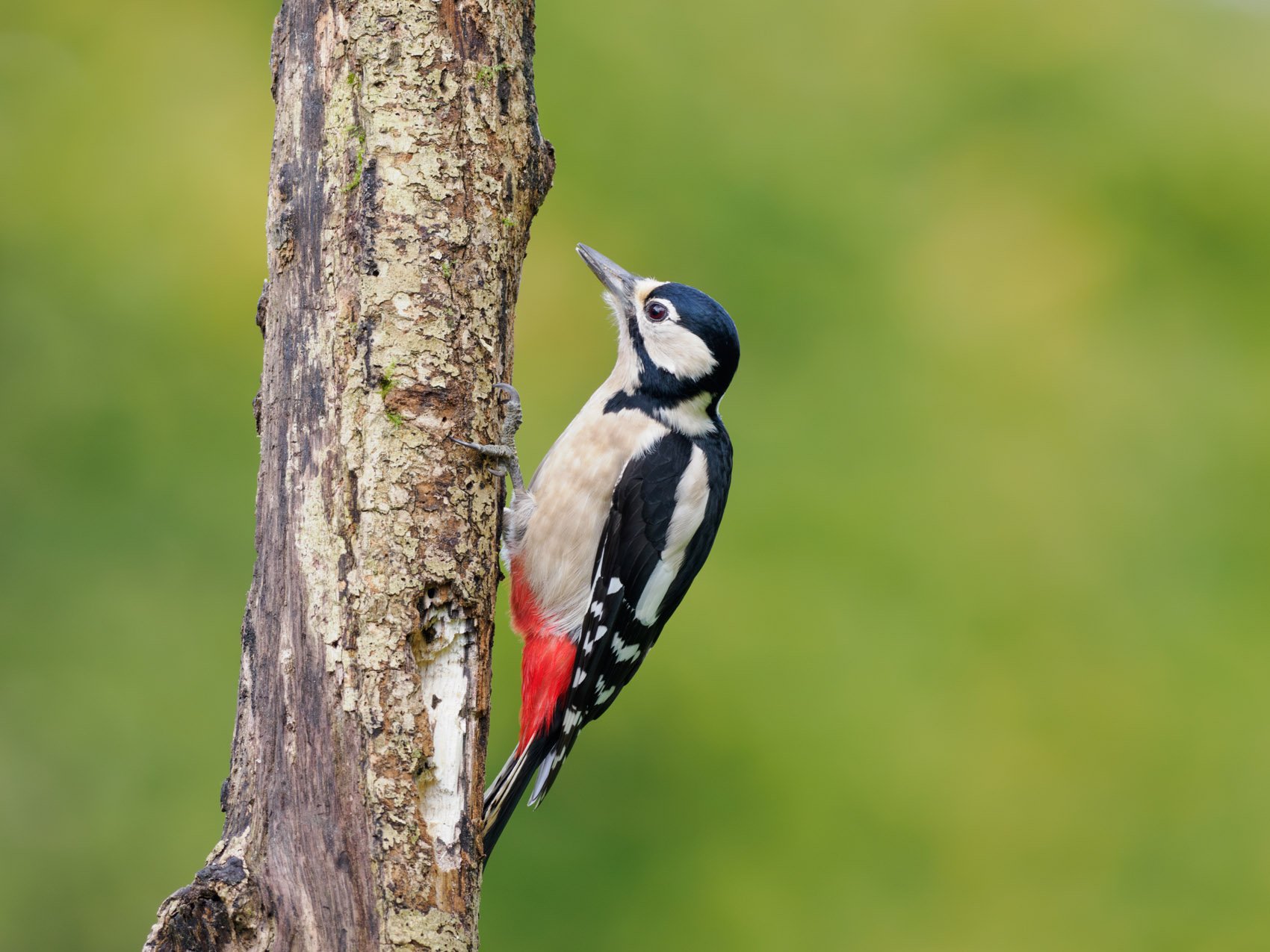Working the Light
What makes a picture stand out? Of course, a stunning subject helps but in my opinion, it’s good light that makes a picture really stand out. Therefore, when I’m out with my camera I am always looking to see where the light is. There are days that are bright and overcast when the light falls evenly everywhere, without shadows and contrast, making the scene look a bit flat. Don’t get me wrong, these days can still be good for photography. Non-directional flat light can make balancing an exposure much easier – think about a great spotted woodpecker. It’s much easier retaining detail in the black and white feathers on an overcast day compared bright sunshine.
Those black and white feathers are much easier to expose for in flat light
Good light – early morning, evening, or those lovely late autumn and winter days where the sun remains low in the sky – these are the times when the best light falls and can make pictures special. I love nothing more than being out for sunrise during summer trying to capture a subject in those first rays of light that fall on the land. The pictures below aren’t from the hide, but are examples of how you can work that early morning light.
When I’m at the hide I am always looking to see where the light is. Of course, you can just point your lens at where the birds are landing, but I much rather pick spots where the light is and wait for the bird to come to that spot, knowing that this will give me a picture that really pops.
Turning Something Common into Something Beautiful
I have seen people at the hide not take pictures of blue tits, I’m guessing because they don’t consider them to be worthy of a picture because they are so common. But just look at how gorgeous these two blue tits are when photographed in good light. They may be a common bird, but look at those colours - stunning! Good light transforms any subject and makes anything worthy of your attention.
Raking side light in the afternoon gives contrast and depth
Early morning front light makes both the subject and background pop. Just look at the autumn colours 😍
The spread of light at the hide during the summer months is quite consistent, this is because the sun spends more time above the tree line that surrounds the hide. It’s a different story during winter as the sun remains low and shines through the naked trees. This creates patches of light, giving stunning contrast. It can cause the birds to be nicely lit, with the background in shadow, and the opposite can also apply.
Don’t be afraid of strong raking light and shadows
This pheasant was standing on the log pile at the hide and I noticed how the light was coming in from the left, really highlighting his stunning plumage. I knew that in order to preserve the detail in the white feathers of his collar I had to heavily underexpose. So I dialled in 1.7 stops of negative compensation which also had the benefit of darkening down the surrounding area even more, creating this lovely effect of him stepping out of the shadows.
When it Rains
Slowing the Sutter speed down turns rain droplets into streaks
I also want to mention the conditions that cause many people to not even think about going out with their camera: dull rainy days. As much as I love the golden light, I am also quite happy to be out in the rain when the light is far from ideal. At the hide this is great as you can stay dry, shoot in comfort with a hot beverage and capture images that some people don’t even think about taking. The dull light means you can shoot at slow shutter speeds and create rain streaks to emphasise the movement of the rain. It also creates a sense of mood, and in the case of the long-tailed tit below, I think that mood is pretty cheesed off!
My favourite bird looking slightly bedraggled
Dealing With the Light
When shooting in bright conditions it is vital to not over expose. When photographing birds, your attention needs to be on the white feathers during bright conditions. Apply negative exposure compensation to avoid ‘burning out’ those white feathers, but be careful – you don’t want to apply so much negative compensation that you make the dark feathers too dark – it’s a balancing act! Your histogram can be a vital tool to help ensure that you don’t kill the highlights and shadows. Once pixels are pure white or pure black, they will always remain so. They can’t be recovered, not even from a RAW file.
There are times when, for artistic purposes maybe, that you may want to underexpose to the point of losing shadow detail, as I did with the pheasant above. And that’s the great thing about photography, it’s open to interpretation and it’s your picture, you take it how you want. Be creative!
Work the light, it’s worth it









